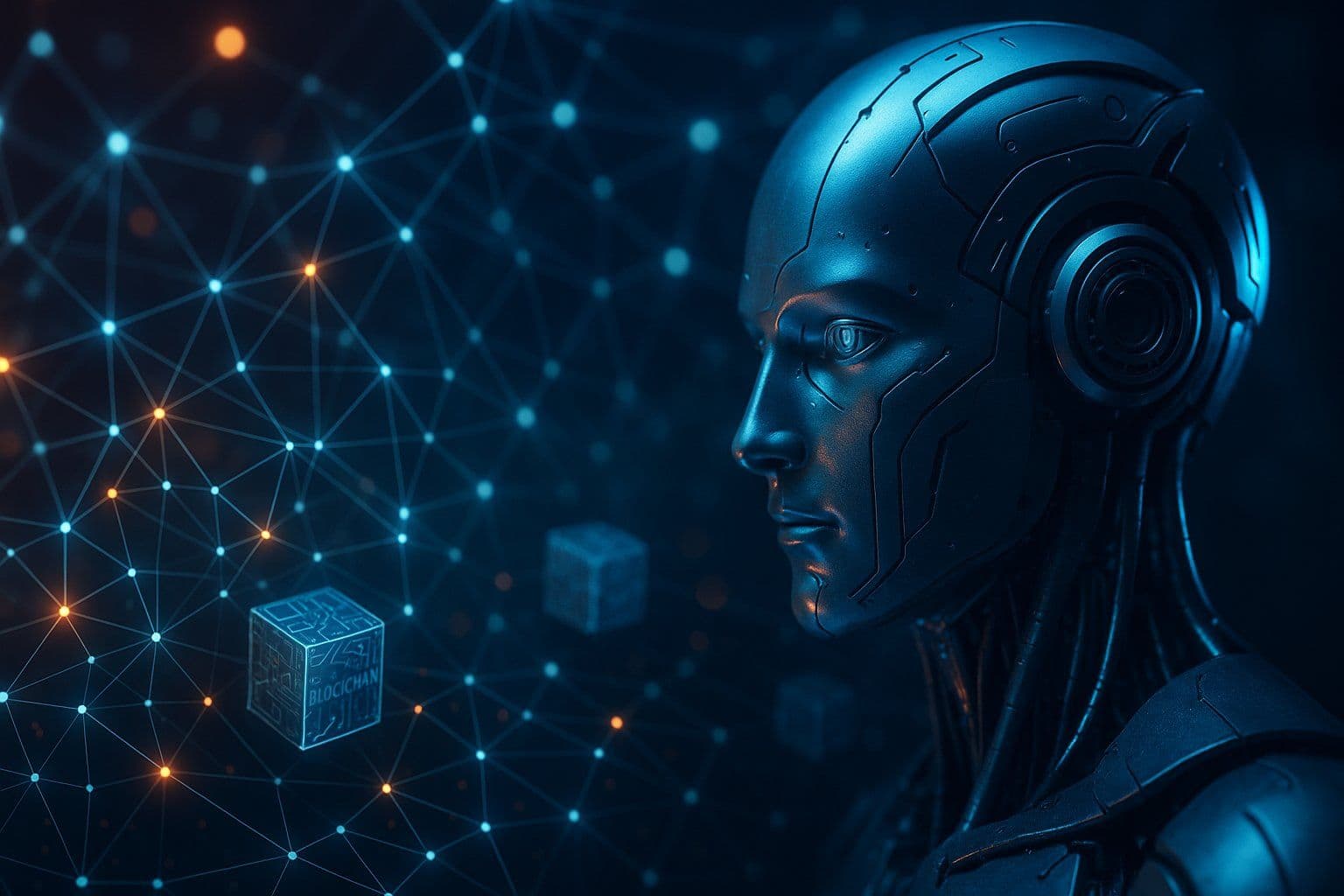Artificial Intelligence Takes the Driver’s Seat in DeFi
A new frontier is emerging in digital finance — one where autonomous algorithms are beginning to act, trade, and adapt without human oversight. In 2025 alone, venture investors have committed more than $1.39 billion to AI-driven Web3 projects, according to multiple industry trackers.
The funds are flowing into a new class of software called AI agents — self-governing algorithms that execute blockchain-based transactions, optimize liquidity, and manage portfolios in real time. Unlike conventional trading bots, these agents use machine learning models to make predictive decisions across decentralized networks.
“AI agents are the missing link between human intent and autonomous execution in DeFi,” said Mark DiStefano, an analyst at London-based fintech research firm Autonomy Capital. “They’re not just following orders; they’re making micro-decisions at machine speed, and that’s what excites investors.”
Why Capital Is Flowing In
The surge in funding reflects a convergence of three powerful trends: advancing AI models, increasingly complex DeFi systems, and the global hunt for yield.
- Scalability: AI agents can monitor thousands of on-chain contracts simultaneously, analyzing market shifts faster than any team of analysts.
- Efficiency: With DeFi yields falling since 2023, automation promises to recover lost margins through precision liquidity management.
- Data abundance: Public blockchains provide the perfect training ground — structured, transparent, and rich in behavioral signals.
- Hype momentum: The broader AI investment cycle is spilling into blockchain, accelerating projects that merge autonomy with tokenized finance.
“Every DeFi protocol wants an AI layer,” said crypto venture advisor Mira Shen. “These agents promise to reduce slippage, detect arbitrage faster, and even govern DAOs without emotional bias. It’s automation meeting ideology.”
What These Agents Actually Do
Far from science fiction, AI agents are already operational inside multiple Web3 ecosystems. They perform a range of specialized tasks that were once handled manually:
- Liquidity optimization: shifting assets between decentralized pools based on yield, risk, and gas efficiency.
- Risk detection: flagging suspicious transactions or price manipulation before liquidation cascades occur.
- Automated governance: voting in decentralized autonomous organizations (DAOs) on behalf of stakeholders.
- Cross-chain arbitrage: scanning for temporary price gaps and executing instant trades.
One notable pilot, Aether Protocol, recently launched an autonomous liquidity engine that redistributes funds across Polygon, Ethereum, and Arbitrum networks — reportedly boosting average returns by 14 percent while lowering transaction costs.
The Hidden Risks of Autonomy
Despite the enthusiasm, the rise of AI agents introduces a new dimension of systemic risk. Unlike human traders, autonomous systems can act simultaneously across multiple protocols, amplifying volatility if their strategies converge.
“Imagine hundreds of agents reacting to the same signal within milliseconds,” said blockchain security consultant Dr. Ewa Lis. “You get flash-crash dynamics on-chain, without anyone at the wheel.”
Cybersecurity experts have also warned that compromised or cloned agents could trigger large-scale exploits. Smart-contract auditing firms are now adding “AI logic integrity” to their verification checklists — a concept that barely existed a year ago.
The European Systemic Risk Board and U.S. Treasury analysts have both noted in policy briefings that autonomous finance may fall into a legal vacuum, where accountability is difficult to assign.
Regulation Playing Catch-Up
For regulators, AI-driven crypto activity presents a fundamental challenge. Who bears responsibility if an autonomous agent breaks securities law or manipulates a decentralized exchange?
The Financial Stability Board recently noted that current frameworks “lack adequate provisions for machine-initiated trading behavior in decentralized environments.” Some policymakers are exploring the concept of digital accountability IDs — traceable identity tags embedded in AI code to link actions back to creators.
However, industry leaders warn that overregulation could suffocate innovation. “We shouldn’t treat every algorithm like a potential criminal,” said Esteban Cruz, co-founder of the Singapore-based DeFi analytics firm Quantshift. “The key is auditability, not prohibition.”
Market and Industry Implications
This fusion of AI and blockchain is altering the power dynamics of crypto trading. In traditional finance, algorithmic trading accounts for more than 70 percent of volume. Now, similar dominance could extend into decentralized markets.
Institutional adoption appears to be accelerating. Several investment desks have started allocating small percentages of their crypto portfolios to agent-managed strategies. Meanwhile, major exchanges are building native APIs to accommodate automated liquidity actors.
Analysts expect the total value managed by autonomous agents could surpass $10 billion by late 2026 if current growth continues.
The Human Element in a Machine-Led Future
While the rise of AI agents signals a step toward self-regulating finance, experts emphasize that oversight and ethics remain crucial. Trust will depend not only on how fast these systems learn, but also on how transparent they remain.
“Autonomy is powerful, but it needs accountability,” said DiStefano. “Without visibility into decision logic, the line between optimization and exploitation becomes razor thin.”
For now, investors appear undeterred. The market sees AI agents as the next inflection point in digital finance — a bridge between human intent and machine execution. If the promise holds, decentralized finance could soon evolve into something far more autonomous than anyone imagined.


Comments